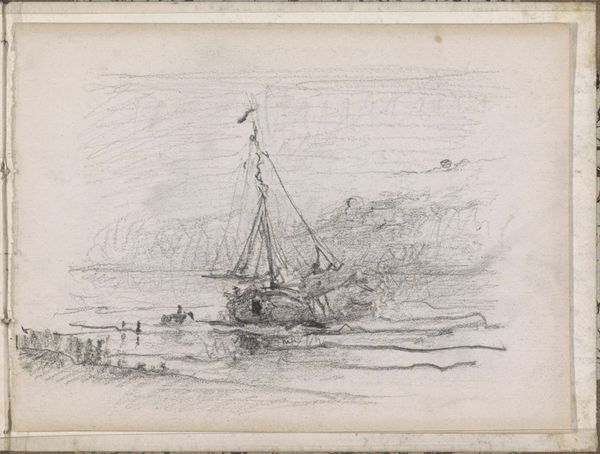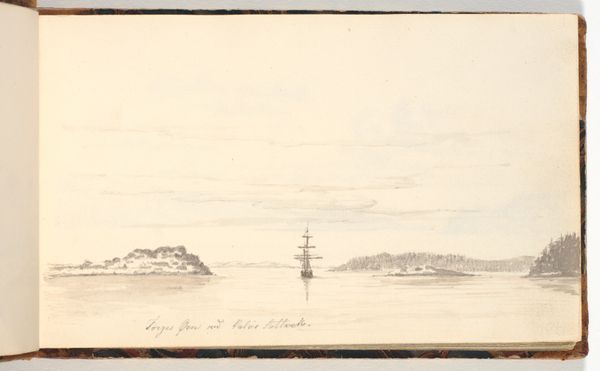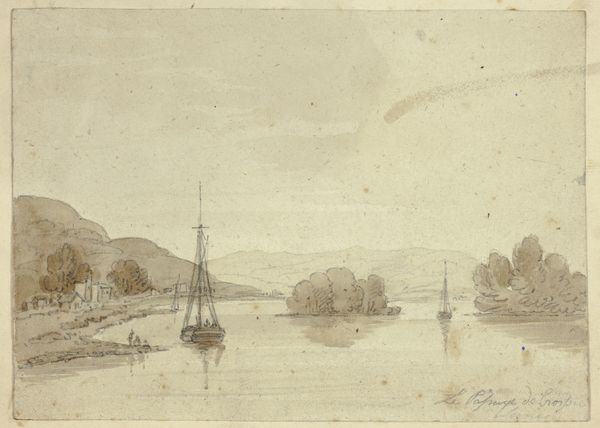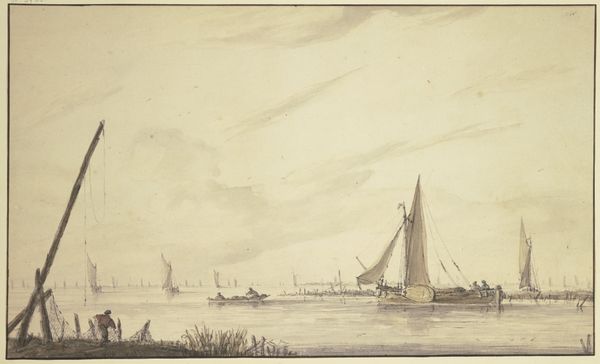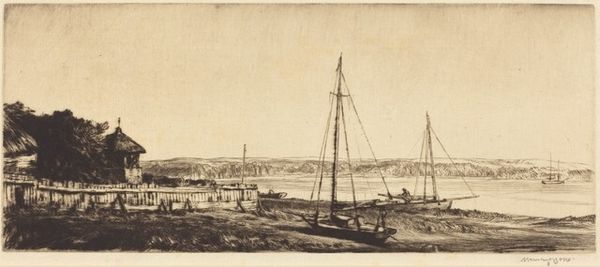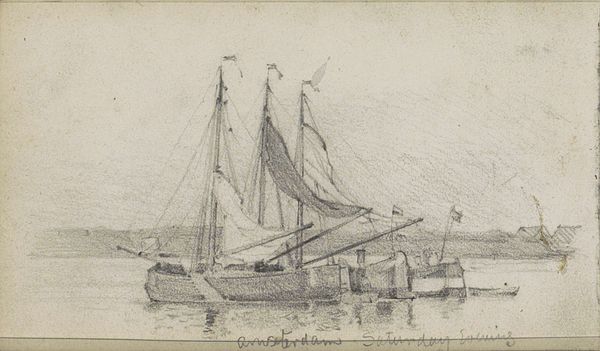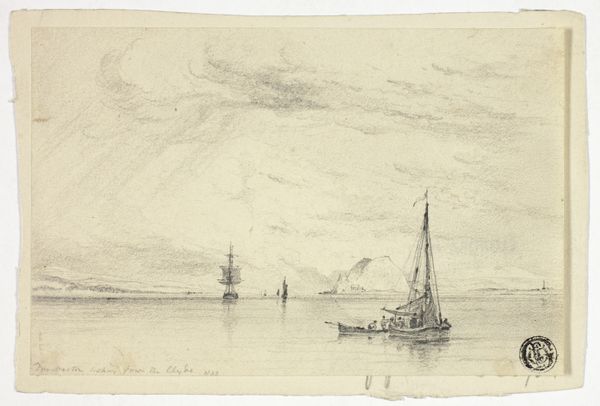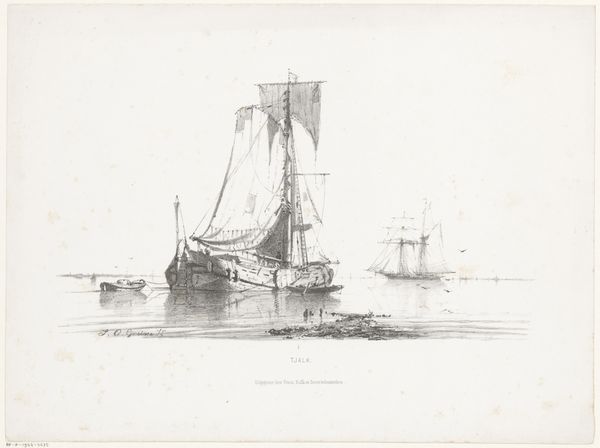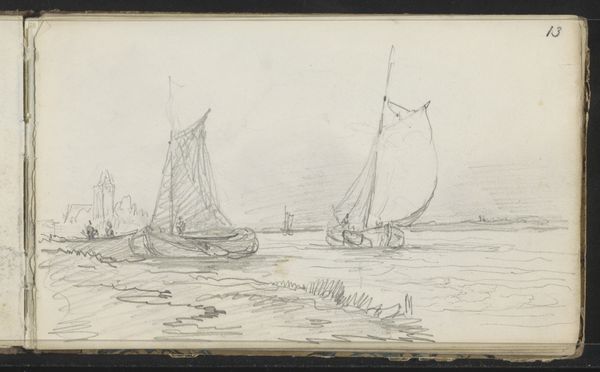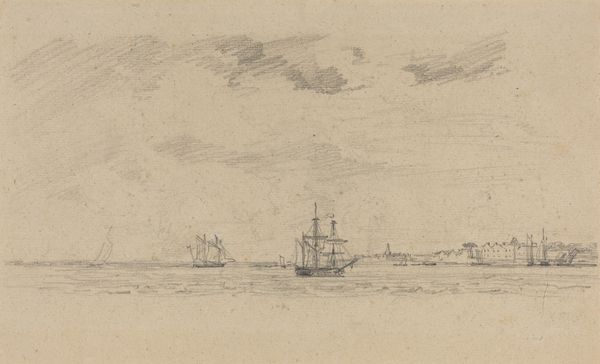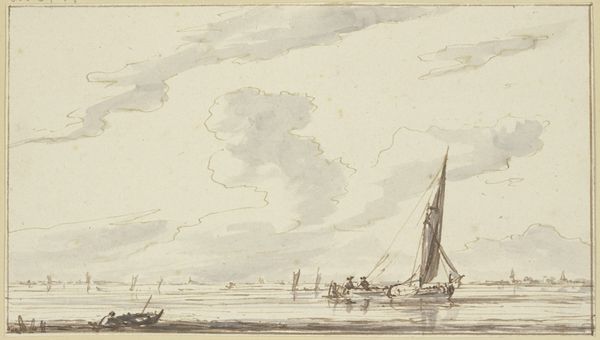
drawing, etching, ink
#
drawing
#
ink drawing
#
baroque
#
etching
#
landscape
#
etching
#
ink
Dimensions: 166 mm (height) x 316 mm (width) (bladmaal)
Curator: This etching from 1639, entitled "Flodprospekt fra Lormont, Bordeaux, set fra Garonnefloden," captures a sweeping vista of Bordeaux. I am particularly interested in how this piece mediates the tensions of maritime trade, landscape, and urban expansion of that era. Editor: Oh, it's wonderfully atmospheric, isn’t it? That muted palette of browns and the simple, almost dreamlike rendering of the river and sky evoke a sense of stillness. You can almost feel the gentle rocking of that little boat! Curator: Precisely. The medium itself, etching, allows for detailed, reproducible images that circulated widely, contributing to a visual culture tied to burgeoning capitalist activity. Think about the material impact of etching - the paper, the ink, the tools, all implicated in networks of trade and exchange that mirror the boats depicted on the Garonne. Editor: Absolutely, and that handmade quality! Even though it's reproducible, there’s an intimate touch. I’m imagining the artist sketching directly from life, wrestling with the fleeting light. There's something inherently emotional about that kind of direct observation, immortalizing this moment in time and offering a lens to travel through memory. Curator: It's intriguing how he positioned the viewer, suggesting perhaps a rising merchant class consuming such views as a way to legitimize their position. How did the production of art affect social power? Who owned the means of its making and dissemination? Those questions frame the relevance of an artwork like this in understanding historical material dynamics. Editor: Right, that kind of tension is subtly mirrored in the composition. The sprawling landscape, that humble fishing boat gently tugging, almost insignificant compared to the larger port... There's a story etched into those lines, almost whispers from history that give way to many narratives about Bordeaux's economic rise through its people. I suppose it begs the question about what the lives of laborers might have been that inhabited those cities. Curator: It is an important conversation to be had when looking into works of art as such. The interplay of skill, vision, economic circumstance. I do like how this work can keep you anchored to all of these questions as it floats from history. Editor: Beautifully said! Art as both a looking glass and a floating device through the many stories of human endeavors, isn't it?
Comments
No comments
Be the first to comment and join the conversation on the ultimate creative platform.
